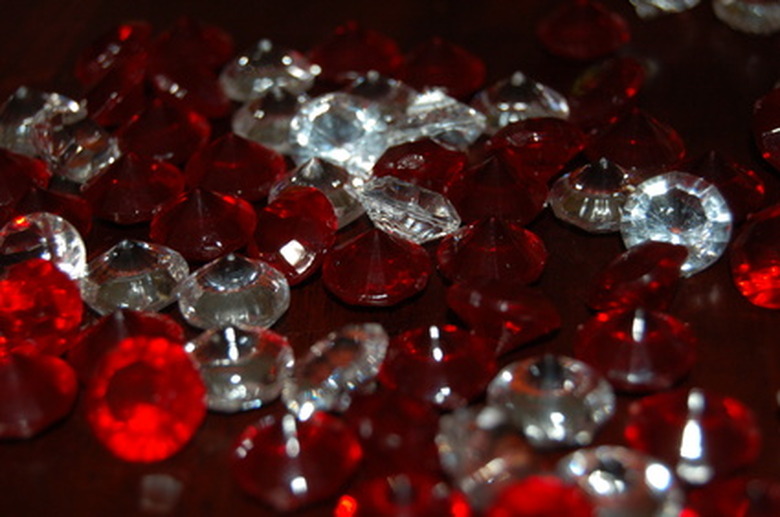How To Create Synthetic Rubies
Creating synthetic gemstones requires very high heat. One of the most inexpensive processes for synthesizing rubies is the flame fusion method. First developed by August Verneuil, this method begins with a powder mixture that is heated until it has melted. This material is then made to solidify as a crystal. The most crucial variable in the ruby-making process is the purity of the powdered material: Aluminum Oxide (95 percent of the mixture) and Chromium Oxide (5 percent of the mixture).
Step 1
Mix the aluminum oxide and chromium oxide powders together. Place the powdered mixture in the hopper of the Verneuil furnace, which is the container at or near the top of the blowpipe.
Step 2
Connect the oxygen tank to the uppermost valve on the furnace blowpipe and the hydrogen valve on the lower valve of the furnace blowpipe. Turn the hydrogen tank on and press the ignite button on the furnace, near the hydrogen valve nozzle. Then, turn the oxygen tank on, releasing oxygen to fuel the hydrogen fire within the blowpipe.
Step 3
Start the hammer at the top of the furnace blowpipe. Set its speed to 80 taps per minute. It will release the powdered mixture down the blowpipe shaft into the hydrogen flame. There, the powder will molten, dripping onto the ceramic pedestal below and creating the synthetic ruby. After about ten minutes, or when a suitable base has formed on top of the ceramic pedestal, reduce the speed of the hammer to 20 taps per minute.
Step 4
Cut off the gas supply when all of the powder has been released, after about two or three hours. Allow the ceramic pedestal and synthetic ruby, or boule, to cool overnight.
Step 5
Remove the boule from the furnace. Give the ruby end a slight tap with a hammer, which will cause it to split in half and disconnect from its ceramic base.
Things Needed
- 475 g Aluminum oxide powder (Al2O3 or Alumina)
- 25 g Chromium oxide powder (Cr2O3)
- Verneuil furnace
- Hydrogen tank
- Oxygen tank
- Hammer
TL;DR (Too Long; Didn't Read)
Use an aluminum oxide powder that is as pure as possible with no sodium or other impurities.
Warning
Do not use a Verneuil furnace without proper safety equipment and training.
References
- "Gems: Their Sources, Descriptions, and Identification"; Michael O'Donaghue; 2006
- "How Products are Made: Volume 4"; Loretta Hall; 1996
Cite This Article
MLA
Wagner, Angela. "How To Create Synthetic Rubies" sciencing.com, https://www.sciencing.com/create-synthetic-rubies-6788778/. 24 April 2017.
APA
Wagner, Angela. (2017, April 24). How To Create Synthetic Rubies. sciencing.com. Retrieved from https://www.sciencing.com/create-synthetic-rubies-6788778/
Chicago
Wagner, Angela. How To Create Synthetic Rubies last modified March 24, 2022. https://www.sciencing.com/create-synthetic-rubies-6788778/
